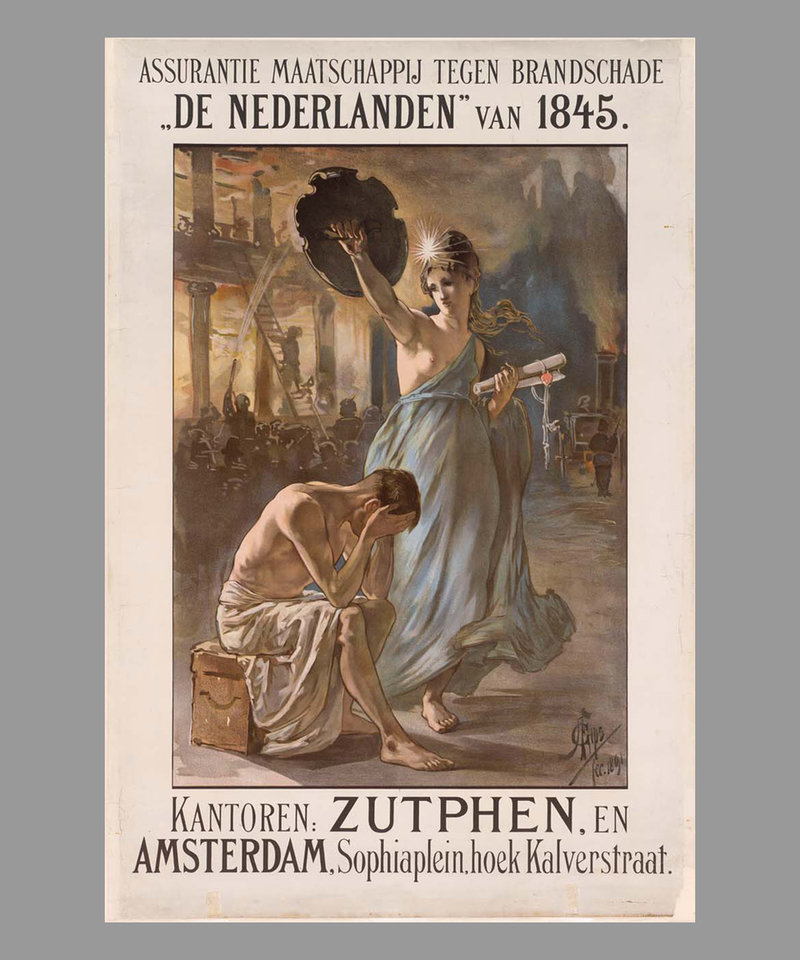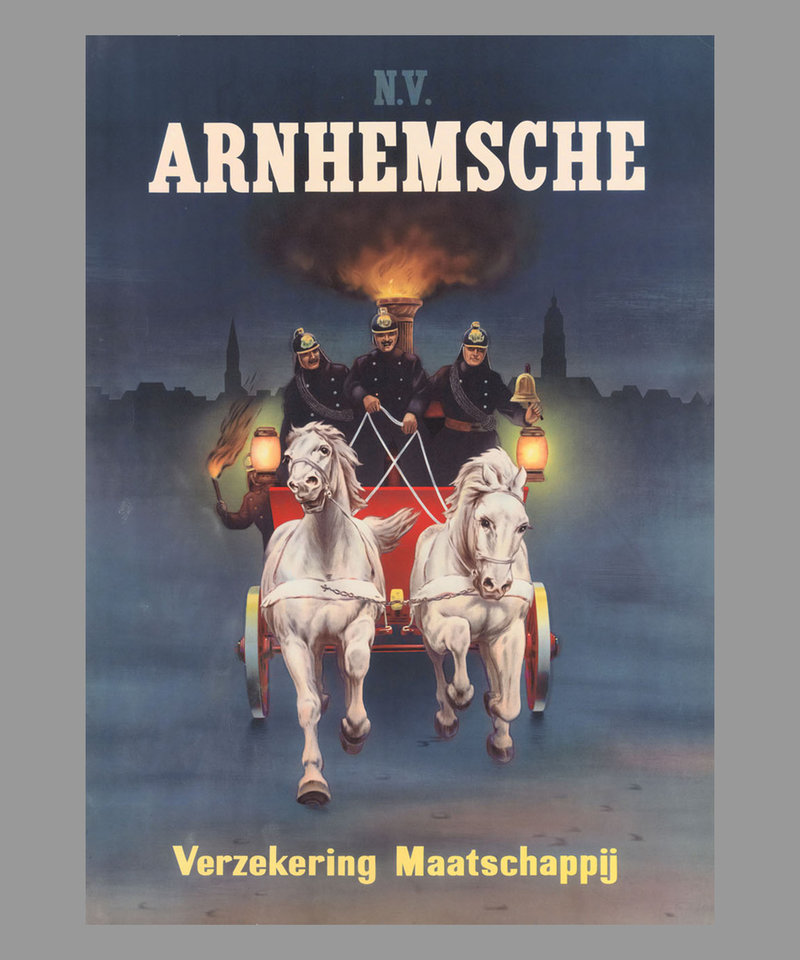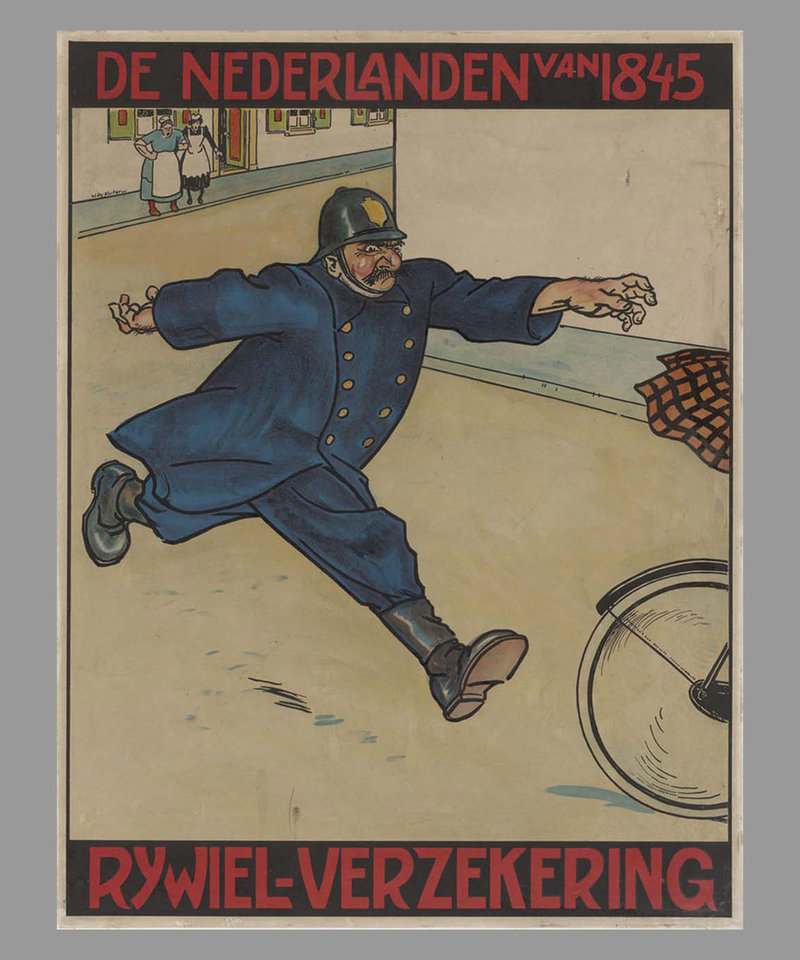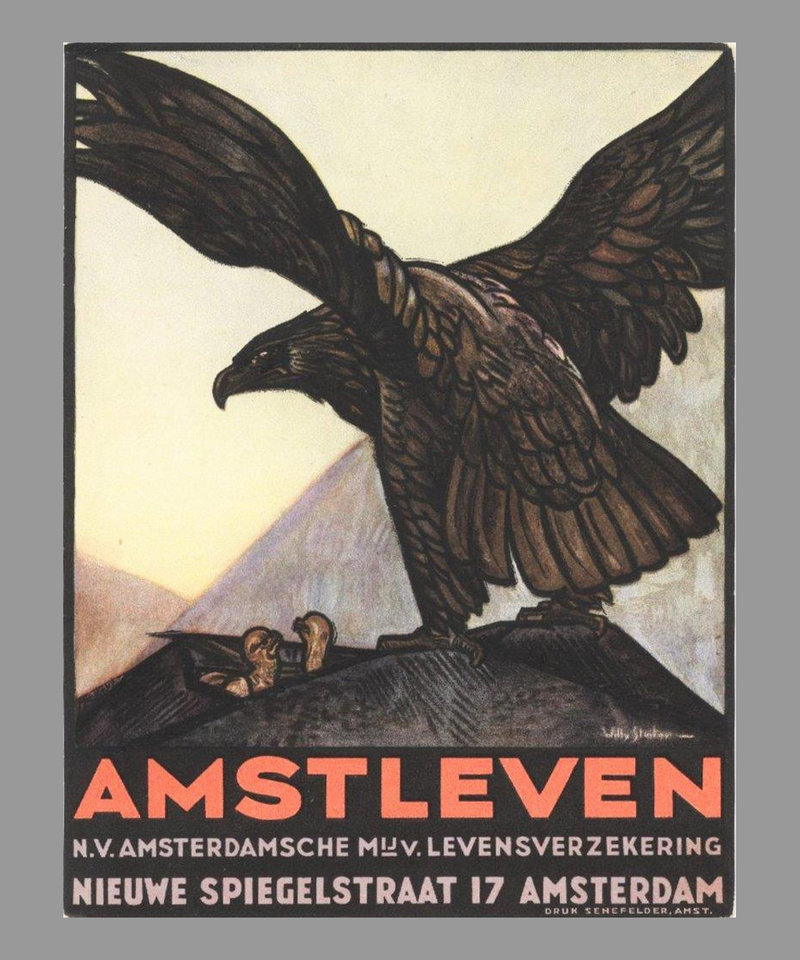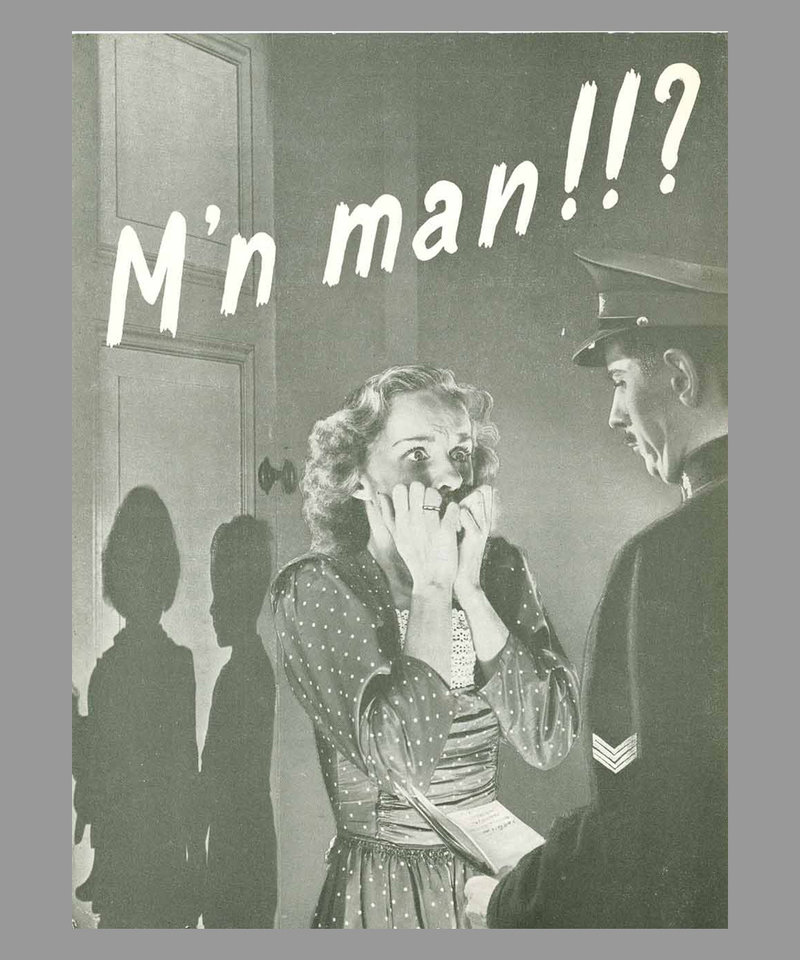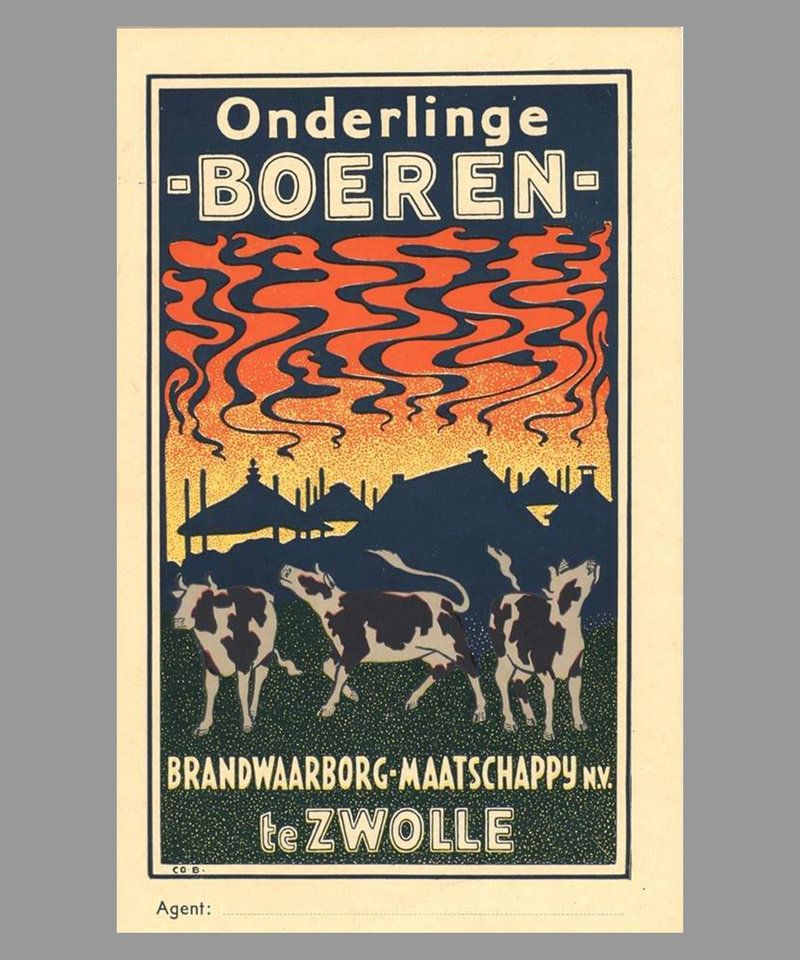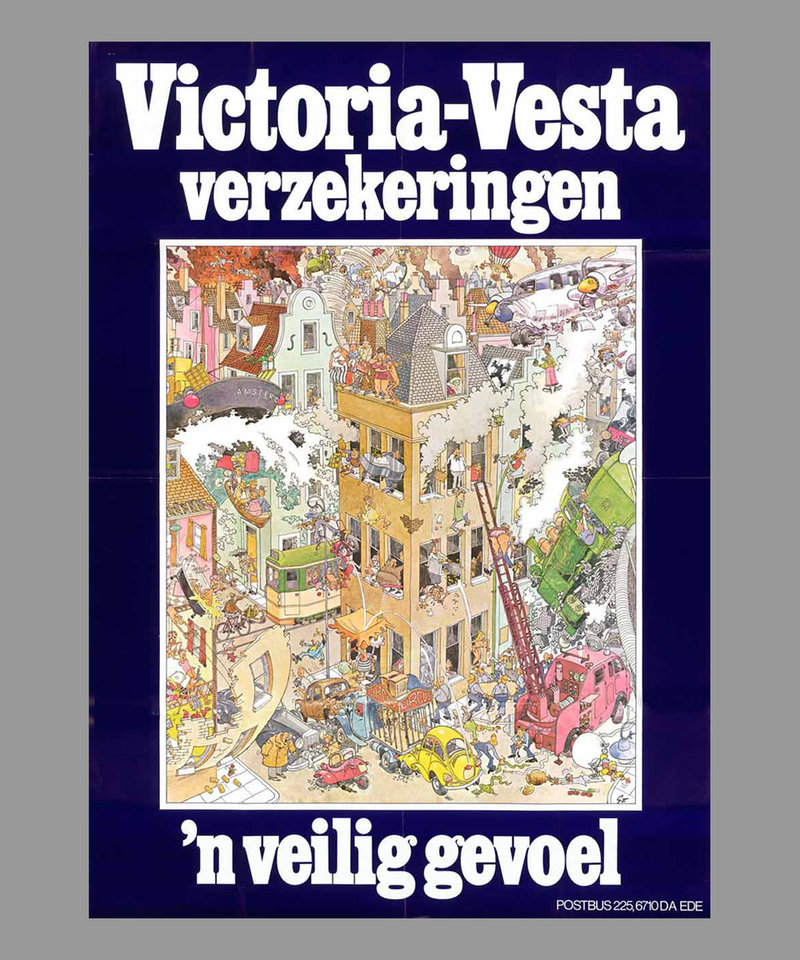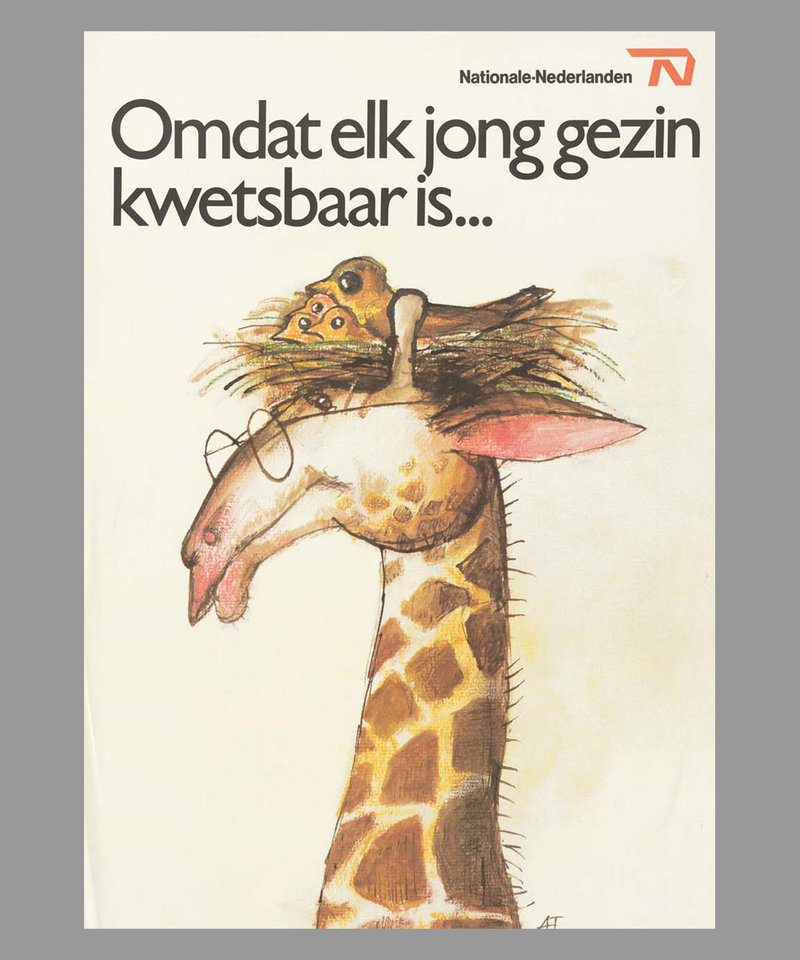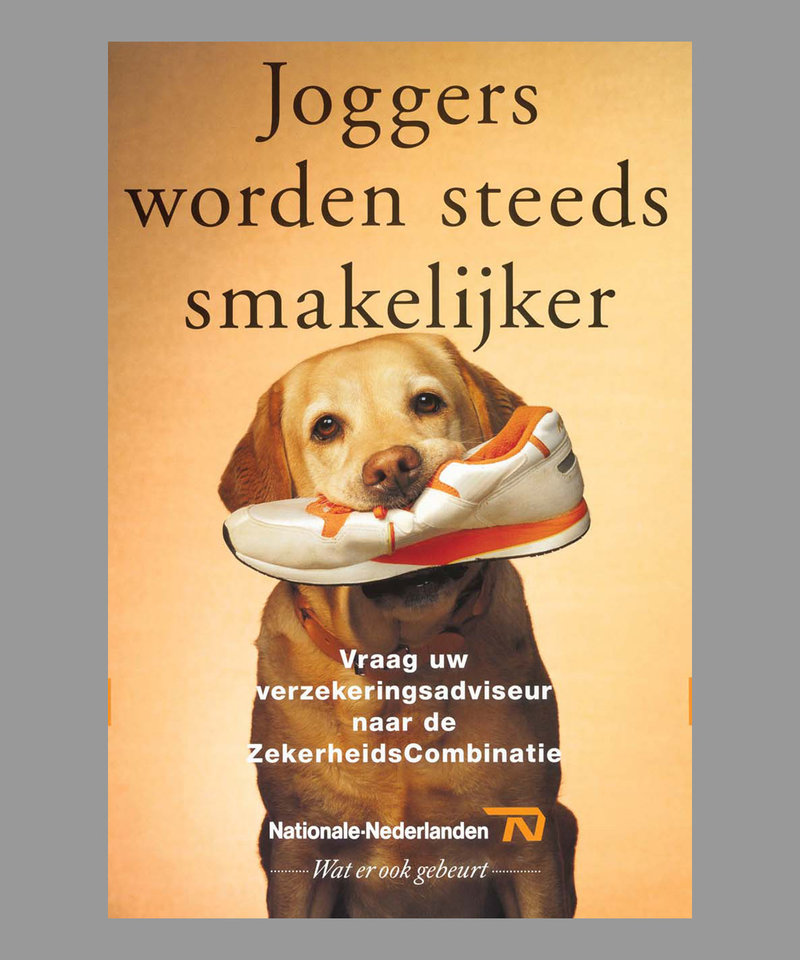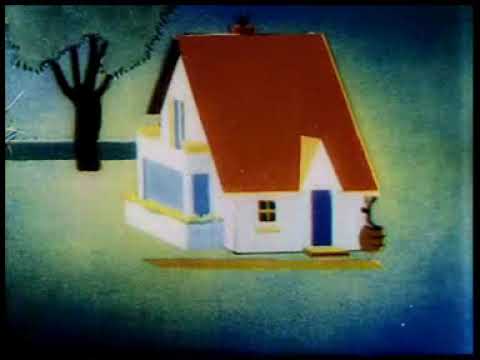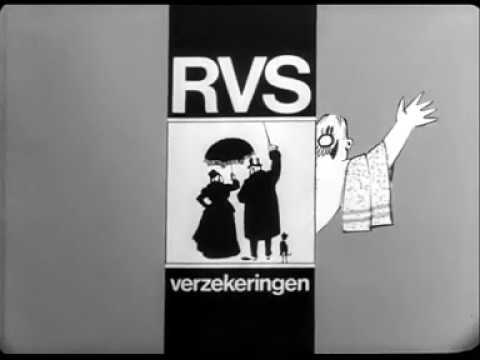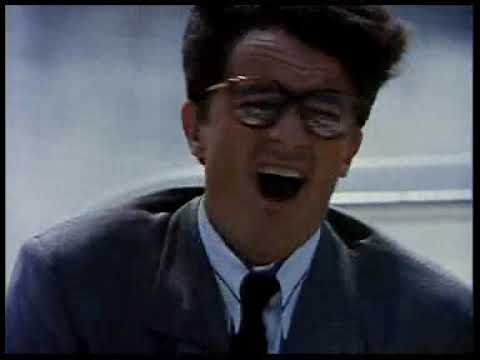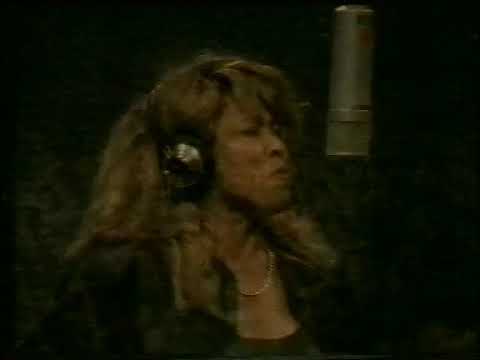Advertisements
Fire plates, thin plaques made of metal and other long-lasting materials, and placed high up on a building, show that a property is insured, and are an early and special form of insurance advertising. The insurance agents who work for a company also help to spread its good name. At the end of the 19th century, eye-catching posters appear in the streets and mark the rise of advertising as we still know it today.
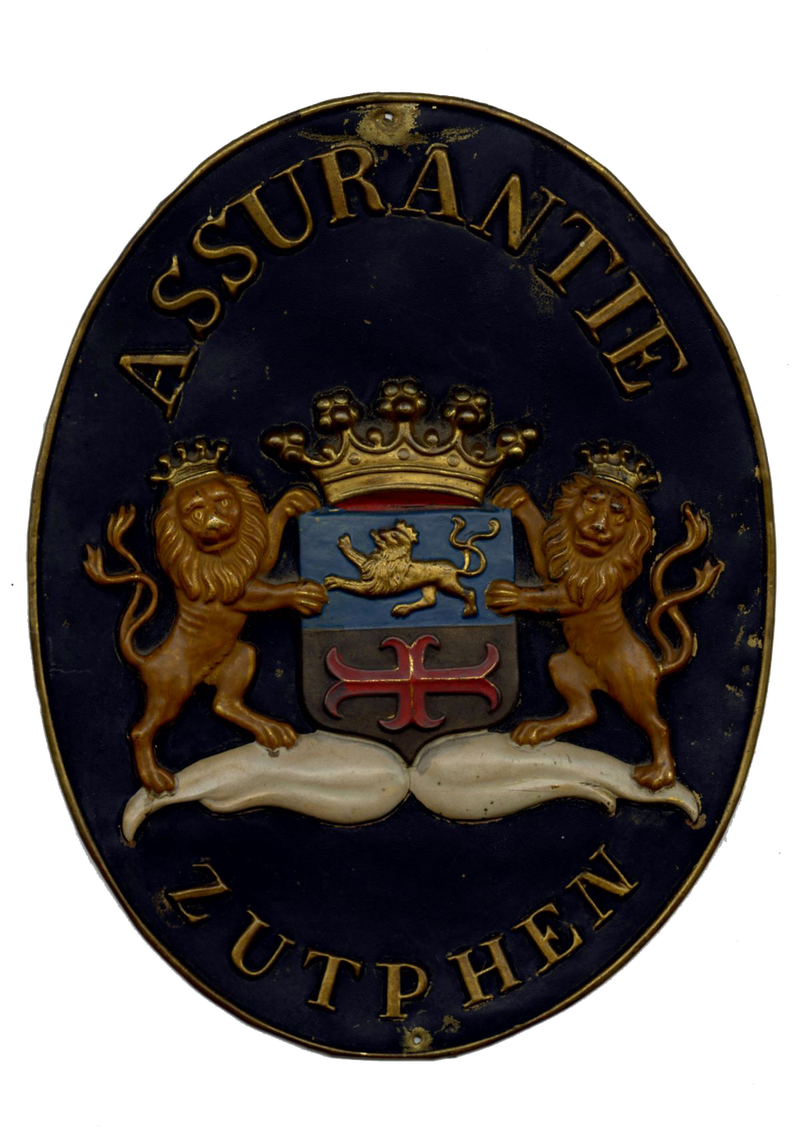
For insurers it is important to make use of clear visual representations. Typical of their advertising style is Christian symbolism in which angels, children and animals play a leading role. Angels stand for protection, a virgin symbolises the purity of life insurance, children suggest innocence, a lion stands for courage and a rooster for vigilance. The advertising mood is often heavy in tone and very direct: without an insurance policy, a disaster means poverty and despair.
During the 20th century, symbolism is replaced by real men and women going about their daily lives. We see a wide variety of styles, including many drawn advertising posters in bright colours and striking lines. The melancholy atmosphere does not completely disappear but there is also room for some humour.
The oldest cinema advertisement in our collection dates from 1939, an animation film in colour. The first TV commercials appear in black and white on Dutch television much later in 1967, and the RVS scoops other insurers. Also dating from the 1960s is the phenomenon of long-term advertising campaigns, which use recurring themes. Such as a fixed pattern, the same colour or a recognisable form. Sometimes famous actors feature.
Well-known in the Netherlands is the commercial featuring Johnny Kraaykamp Jr with his line: ‘I hardly dare ask.’
